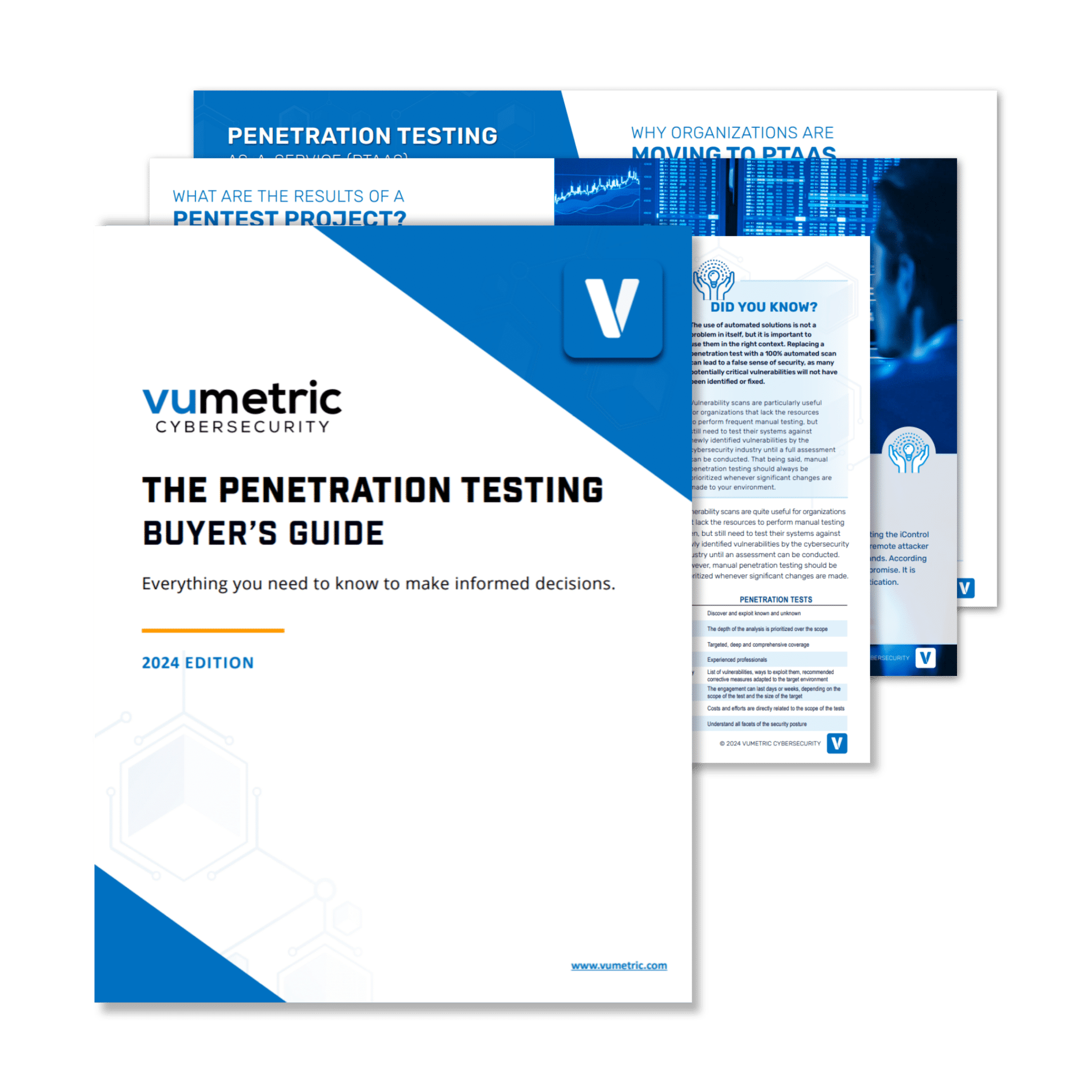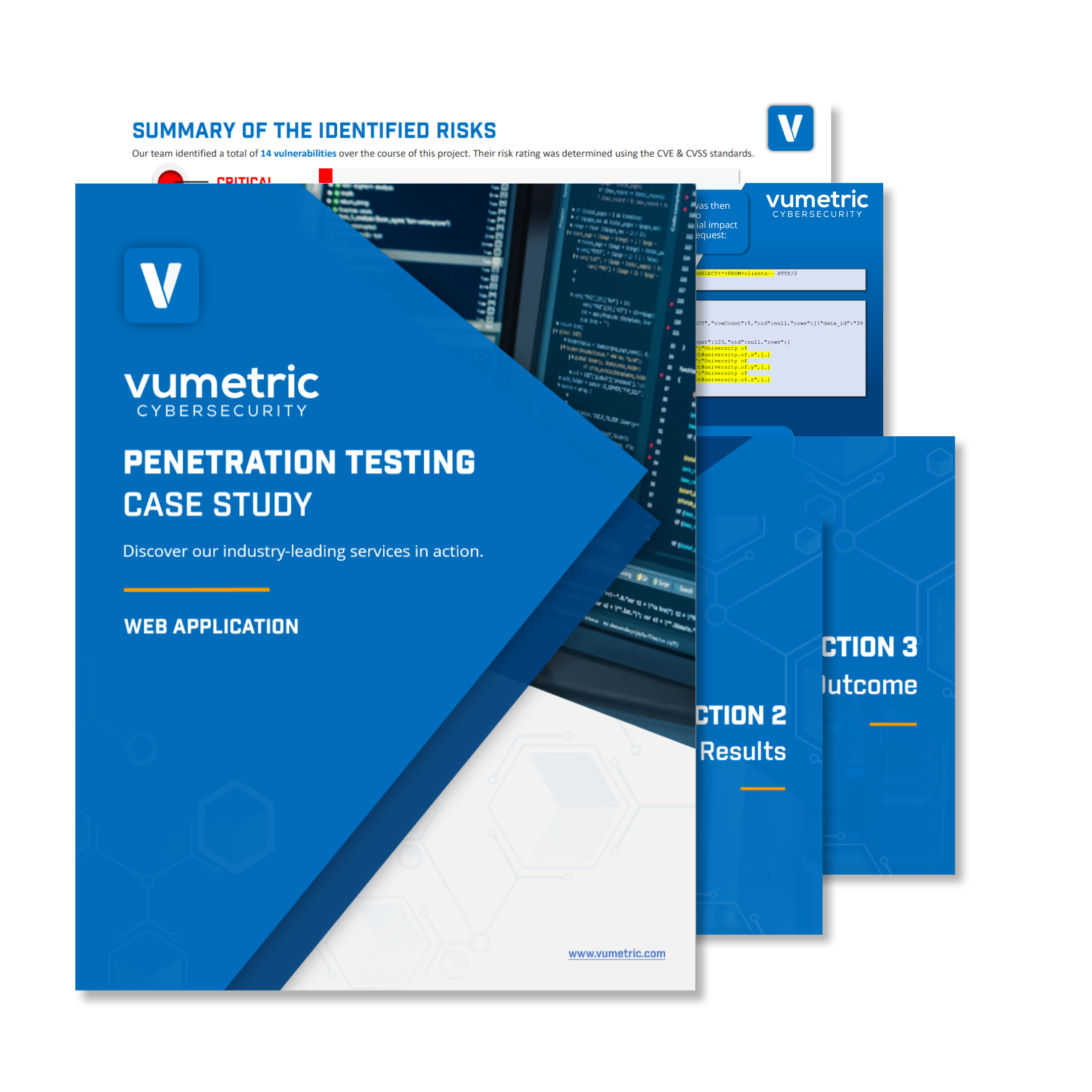As more and more organizations integrate technologies into their operations, cybercrime has become a huge threat to businesses of all sizes. 81% of surveyed business leaders say that the rising use of technologies introduces vulnerabilities faster than they can be secured. In order to prevent potentially costly incidents, it has become critical to perform regular assessments of your cybersecurity.
Vulnerability scanners and penetration tests are the most common techniques to uncover and fix cybersecurity flaws within your technologies. While some similarities exist between the two, they are often misinterpreted as the same thing although they yield very different degrees of analysis.
Vulnerability scanners are generally used by IT staff in order to test network infrastructures for known vulnerabilities that may have been introduced during their implementation. Penetration tests, by contrast, identifies both well-documented vulnerabilities, as well as those that have never been seen before, while providing evidence of their potential impact on your company.
Here are the key differences between a penetration test and a vulnerability scanner:
Vulnerability scans
Vulnerability scans, also known as vulnerability assessments, begin by compiling an inventory of all of the systems in your network. This may include everything from server configurations, to the technologies on which they reside, to the various devices using the network. During the scan, each of these systems will be tested against multiple databases of known vulnerabilities to highlight potential security flaws.
Main objectives of vulnerability scans
A vulnerability scan serves three main objectives, as summarized in the report generated by the program at the end of the scan. First, you will be presented with a list of all of the systems found by the scan, as well as any vulnerabilities that the scan may have uncovered within the specific models and versions of those systems and software.
Second, the vulnerability scanner will provide you with a list of unpatched software, as well as devices which could potentially represent a risk. Third, the scanner presents a list of common misconfigurations that could represent a risk to your company. Your IT team must evaluate the results of the scan and make a determination about which of them represent genuine threats to your network.
Advantages and disadvantages of vulnerability scans
When implemented correctly, vulnerability scans can provide valuable information on areas where your network security is not up to par. Vulnerability scans also don’t require as much expertise to conduct, which helps to make them a cost-effective solution. Likewise, vulnerability scans don’t take long to run, meaning you can run scans as frequently as you need and act immediately on the results.
Yet scanners possess certain disadvantages and shortcomings to be aware of. To begin with, the usefulness of the data generated by these automated tools is largely dictated by the accuracy of their findings. In other words, IT teams may fail to correctly identify the most pressing vulnerabilities detected by the scan. Just as bad, they often provide false positives that are assumed to be accurate. As a result, your IT staff may waste valuable resources trying to fix vulnerabilities that either do not exist or pose no significant threat to your company.
Another disadvantage of vulnerability scans has to do with their fully automated nature. This automation means that the scanner may not understand logic flaws within an application or a cloud infrastructure, making them most useful for networks. Such flaws can potentially be exploited by hackers to access sensitive data stored within your application, or to perform advanced attack scenarios that, for instance, grant them access to your admin dashboard.
Similarly, vulnerability scans cannot identify vulnerabilities that are unique to the infrastructure and context of your company. A known vulnerability might have a very different behaviour within your ecosystem than it did when it was first documented. This means that a vulnerability previously thought to have a low risk-level might be critical in your context. The scanner’s risk levels will have failed to communicate the severity of the vulnerability, thus leaving you with a false sense of security.
Penetration tests
Like vulnerability scans, penetration tests are mainly focused on identifying security vulnerabilities. Also, like vulnerability scans, penetration tests can be used to find exploitable flaws within your network. Yet penetration tests are a much more complete assessment and can be used for a wide array of other situations — such as identifying exploitable logic flaws within an application, testing the proper segmentation of an industrial network to identify potential risks of a disruptive attack, testing user privilege within a cloud infrastructure, etc. Penetration tests can be adapted to your technological context and be performed on a variety of technologies or components, unlike vulnerability scanners.
A key benefit of a penetration test is that, unlike a vulnerability scan, it does not just look for known vulnerabilities. On the contrary, a penetration test can discover unique and unknown vulnerabilities, and determine exactly how much of a threat each of them poses to your security. Even known vulnerabilities can work in very different ways within your infrastructure and might not be identified by a scanner, as they were never documented within that context the first time they were discovered. An experienced penetration tester will understand the specific configurations and context of your technological environment, allowing him to identify vulnerabilities that are unique to your infrastructure and providing evidence of their potential impact through various scenarios of exploitation.
Penetration tests differ primarily from vulnerability scans in terms of the depth of their probe. A vulnerability scan stops at identifying vulnerabilities according to the specific models and versions of your systems, leaving it up to you to determine if the threat exists or if it represents a risk in your specific context. A penetration test, on the contrary, attempts to exploit vulnerabilities and to intrude within your systems as far as possible, in order to determine the potential impacts that each vulnerability could have on your company. They also provide technical evidence and steps taken to exploit a vulnerability, as well as tailored suggestions supported by external resources to help your team implement the corrective measures. They also will prioritize each vulnerability according to their level of severity and the probability that a hacker reproduces it, allowing your IT staff to focus its efforts on the most prominent risks.
A helpful analogy may make this difference between vulnerability scans and penetration tests clearer. Think of your infrastructure as consisting of a variety of different doors. A vulnerability scan walks up to each one and checks to see if the door is unlocked. A penetration test, on the other hand, opens up the unlocked doors to determine exactly where they will lead and what could happen if said door is opened.
Penetration tests require far more skill than vulnerability scans, and are usually conducted by third-party providers with the appropriate credentials. The tester will bring a wealth of experience that allows them to fully contextualize and prioritize each vulnerability they uncover. This knowledge allows them to paint an accurate picture about the potential for damage each vulnerability possesses.
A penetration tester also leverages numerous penetration testing methodologies and standards in order to more accurately assess the vulnerability. Each of these methodologies and standards provides advanced tools, scripts and vectors of attack commonly used by hackers to exploit a vulnerability — for instance, exploiting user privilege, or introducing malware into the network.
Because penetration tests require a greater degree of knowledge and expertise, they are more expensive and time-consuming to perform than vulnerability scans. Of course, the exact cost of a penetration test depends of a variety of different factors, including the scope of the project, the testing approach used, and the tester’s level of expertise, but the return on investment for a penetration test is by far greater than a vulnerability scan.
External Penetration Testing
Case Study
See our industry-leading services in action and discover how they can help secure your external network perimeter from modern cyber threats and exploits.
Penetration Testing Guide
(2024 Edition)
Everything you need to know to scope, plan and execute successful pentest projects aligned with your risk management strategies and business objectives.
Web Application Penetration Testing
Case Study
See our industry-leading services in action and discover how they can help secure your mission-critical Web Apps / APIs from modern cyber threats and exploits.
Internal Penetration Testing
Case Study
See our industry-leading services in action and discover how they can help secure your internal network infrastructure from modern cyber threats and unauthorized access.
In conclusion
In today’s ever-growing technological world, employing a strategic combination of both vulnerability scans and penetration tests is critical to prevent costly incidents. To learn more about what it takes to protect your company from malicious actors, get in touch with a certified specialist.








